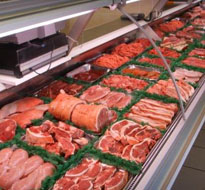In the food industry, the federal Pathogen Reduction Hazard Analysis and Critical Control Program regulates meat and poultry processing plants. Estimates of the compliance costs of this program range from as low as 0.04 cents per pound to as much as 20 cents per pound. While these estimates include actual costs, they do not distinguish between the different components of the rule itself and other indirect factors that could also affect costs.
By addressing some of the weaknesses of these past studies, a 2008 Center for Economic Studies paper, “The Direct and Indirect Costs of Food Safety Regulation,” quantifies the direct and indirect regulator effects of the PR/HACCP rule and the outcomes of direct private actions on the costs of the food safety control process.
The study’s key findings include:
- The cost of federally mandated processing tasks is the largest portion of the PR/HACCP rule for most industries surveyed.
- The larger plants experienced substantial cost advantage when compared with smaller plants, due to economies of scale.
- Nearly half of the cost of compliance with the PR/HACCP rule is attributed to direct private actions; i.e., buyer contracts and plant food safety capital investment.
While the results cannot be generalized to the wider population, the author states that any bias is likely to be quite small.
Tags: safety, nutrition


Expert Commentary